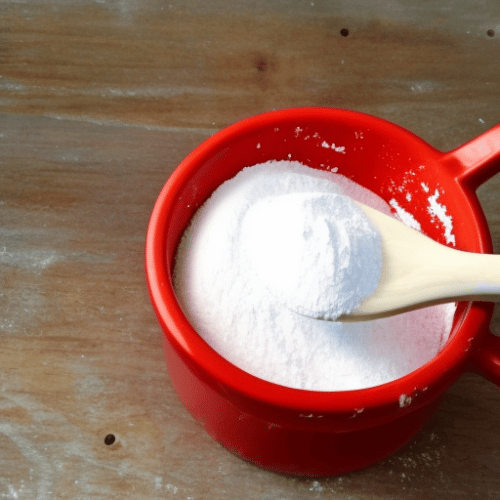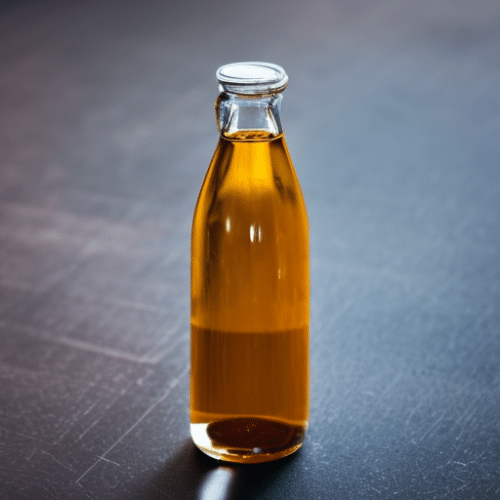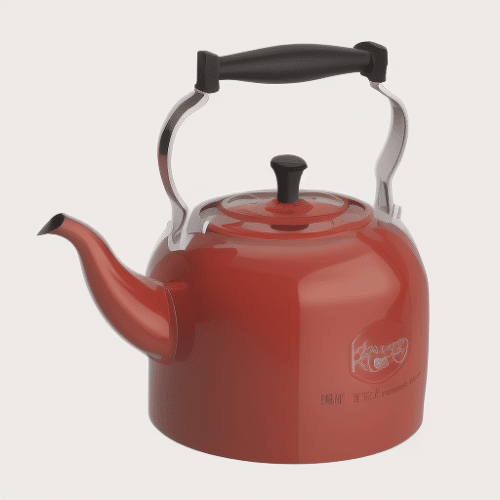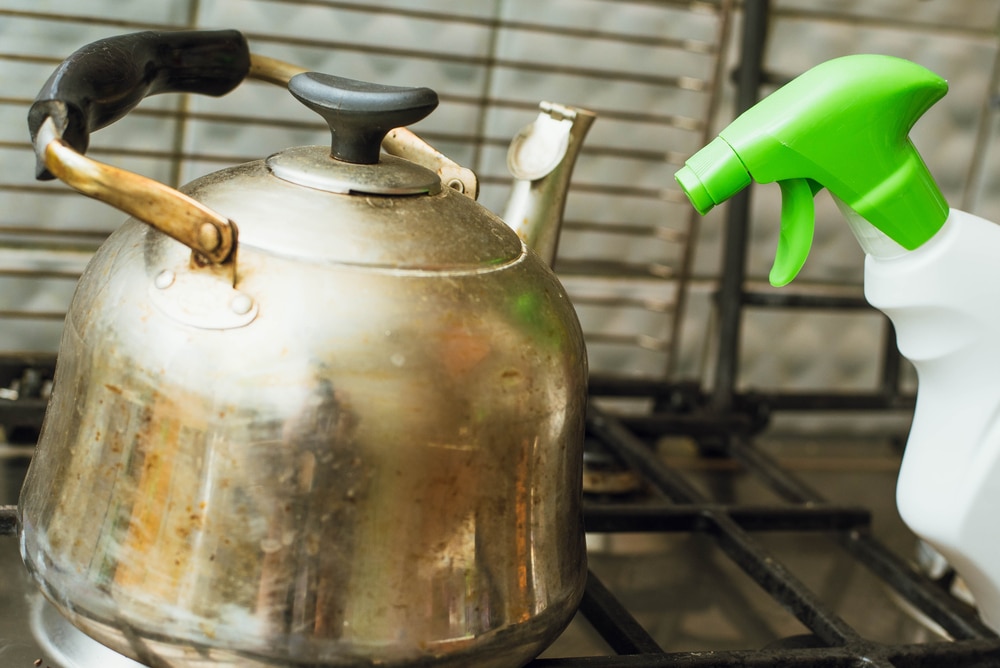Last Updated on
Do you want to learn how to clean a stovetop kettle like an expert? If so, then this guide is just what you need. Cleaning your beloved appliance doesn’t have to be complicated and time-consuming. We’ve gathered the necessary materials and techniques that will make cleaning a stovetop kettle fast, easy and effective. With our simple steps on how to clean a stovetop kettle, you’ll be able to get rid of limescale buildup in no time at all. So grab your supplies, and follow along with us as we show you exactly what needs to be done for spotless results every single time.
Table of Contents:
- What You’ll Need
- Preparing the Kettle
- Finishing Up
- FAQs in Relation to How to Clean a Stovetop Kettle
- Conclusion
What You’ll Need
When it comes to cleaning a stovetop kettle, you’ll need some basic materials and tools. First, grab a sponge or soft cloth for wiping down the surface of the kettle. You may also want to use an old toothbrush for getting into hard-to-reach places. Next, get baking soda and vinegar – both are great natural cleaners that can be used on metal surfaces like your stovetop kettle without causing any damage. Finally, have a bowl of warm water ready so you can rinse off the cleaner once you’re done scrubbing.
Once you have all the necessary supplies, it’s time to begin preparing your kettle for a thorough clean. Let’s take a look at how to get started.
Preparing the Kettle
Before you start cleaning your kettle, it’s important to make sure that any loose debris or scale is removed from the inside. This will help ensure that your kettle is clean and free of any build-up which can affect its performance. Here are some tips on how to prepare your kettle for cleaning by using baking soda and vinegar:
Cleaning with Baking Soda

Cleaning with baking soda is an effective and natural way to clean the inside of your kettle. Baking soda is a mild abrasive that can help remove stubborn stains, odours, and build-up from the interior of your kettle.
Start by filling up your kettle halfway with warm water. Then add 2 tablespoons of baking soda into the water and stir it until it’s dissolved completely. Let this mixture sit in the kettle for about 10 minutes before proceeding to the next step.
Once you’ve let the mixture sit for 10 minutes, take out your sponge or cloth and start scrubbing away at any tough spots on the inside walls of your kettle. The combination of warm water and baking soda should be enough to break down any dirt or grime that has built up over time. Make sure to rinse off all residue after each round of scrubbing so that no particles are left behind on surfaces when finished cleaning.
Cleaning with Vinegar:
It’s an effective and natural way to clean the outside of your kettle without using harsh chemicals. Here’s what you need to do:
To make a vinegar solution for cleaning, mix equal parts white distilled vinegar and water in a bowl or container. You can also add some lemon juice if you want for extra disinfecting power and scent.

Once you have your mixture ready, dip a cloth into the solution and wring out any excess liquid before wiping down the outside of your kettle with it. Make sure that all areas are covered – don’t forget about those hard-to-reach spots. If necessary, use a soft brush or sponge to scrub away any stubborn dirt or grime from the surface of your kettle.
After you’re done cleaning with vinegar, rinse off any remaining residue by wiping down the surface of your kettle with a damp cloth soaked in warm water. This will help ensure that no traces of vinegar remain on its exterior after cleaning is complete.
Once everything has been wiped down and rinsed off properly, dry off the outside of your kettle with another clean cloth before putting it back together again for use as normal. With this simple method, you’ll be able to keep your beloved kitchen appliance looking like new without having to resort to chemical cleaners or other potentially harmful products; so why not give it a try?
Once you’ve cleaned your kettle with vinegar, make sure to rinse it thoroughly and dry the outside before moving on to the next step.
Finishing Up
Cleaning your stovetop kettle is an important part of keeping it in good condition. It’s easy to do and doesn’t take much time, so there’s no excuse not to keep up with regular maintenance.
The first step is to empty out any remaining water or tea leaves from the kettle. Then, rinse it out with warm water. This will help remove any residue that may have built up over time. Make sure you use a soft cloth when drying off the inside and outside of the kettle – this will help prevent scratches or other damage that could occur if you use something too abrasive.
Next, check for mineral deposits on the inside walls of your stovetop kettle. These can be caused by hard water and are often white or yellowish in colour. If you see them, fill your kettle halfway with vinegar and let it sit overnight before rinsing it out again with warm water in the morning. This should help dissolve any stubborn deposits that may have formed over time.
Finally, give your stovetop kettle a thorough cleaning every few months using baking soda and hot water (or a mixture of equal parts vinegar and baking soda). Use a sponge or brush to scrub away any dirt or grime from all surfaces – both inside and outside – then rinse thoroughly with clean hot water until all traces of soap are gone before drying off completely as mentioned above.
This simple routine will ensure that your stovetop kettle stays looking great while also helping maintain its performance level over time. Taking just a few minutes each month to clean it properly can extend its lifespan significantly compared to leaving it uncleaned for extended periods of time, making this small investment well worth the effort.
FAQs in Relation to How to Clean a Stovetop Kettle
How do you clean the inside of a stove top kettle?

Kettles can get pretty grimy on the inside over time, but luckily cleaning them is easy. Start by filling the kettle with equal parts white vinegar and water. Boil this mixture for a few minutes, then turn off the heat and let it sit for an hour or two. After that, empty out the solution and rinse thoroughly with clean water. To finish up, wipe down the interior of your kettle with a damp cloth to remove any remaining residue. With just a few simple steps you’ll have your stove top kettle looking as good as new.
How do you clean the inside of a stainless steel kettle?
To clean the inside of a stainless steel kettle, start by filling it with equal parts white vinegar and water. Let this mixture sit for about 30 minutes before emptying it out. After that, use a soft cloth or sponge to scrub away any residue from the sides and bottom of the kettle. Rinse thoroughly with hot water and dry completely before using again. For tougher stains, try adding some baking soda to your cleaning solution or use a specialized stainless steel cleaner for best results.
How do you clean the inside of a glass tea kettle?
Cleaning the inside of a glass tea kettle is easy and straightforward. Start by filling the kettle with equal parts water and white vinegar, then let it sit for an hour or two. Afterwards, empty out the mixture and rinse thoroughly with hot water. For stubborn stains, use a soft-bristled brush to scrub away any residue before rinsing again. Finally, fill the kettle up with fresh water and boil it to remove any lingering odours from the vinegar solution. With regular cleaning, your glass tea kettle will stay looking as good as new.
Conclusion
Cleaning a stovetop kettle doesn’t have to be a daunting task. With the right supplies and some elbow grease, you can make your kettle look like new again. Whether you choose to use baking soda or vinegar, both are effective methods for cleaning and removing stubborn stains from your stovetop kettle. Don’t forget to finish up by rinsing it with hot water and drying it off before using it again. Now that you know how to clean a stovetop kettle, you’ll never have to worry about discolouration or buildup on the surface ever again.
Paul is the type of person who never met a problem he couldn’t fix. He can always be found tinkering with something in his house, even if it isn’t broken! His tips and tricks are often shared on our site. He’s the one you call when something breaks because he has been known to improvise fixes for everything from leaky faucets to malfunctioning dryers.



